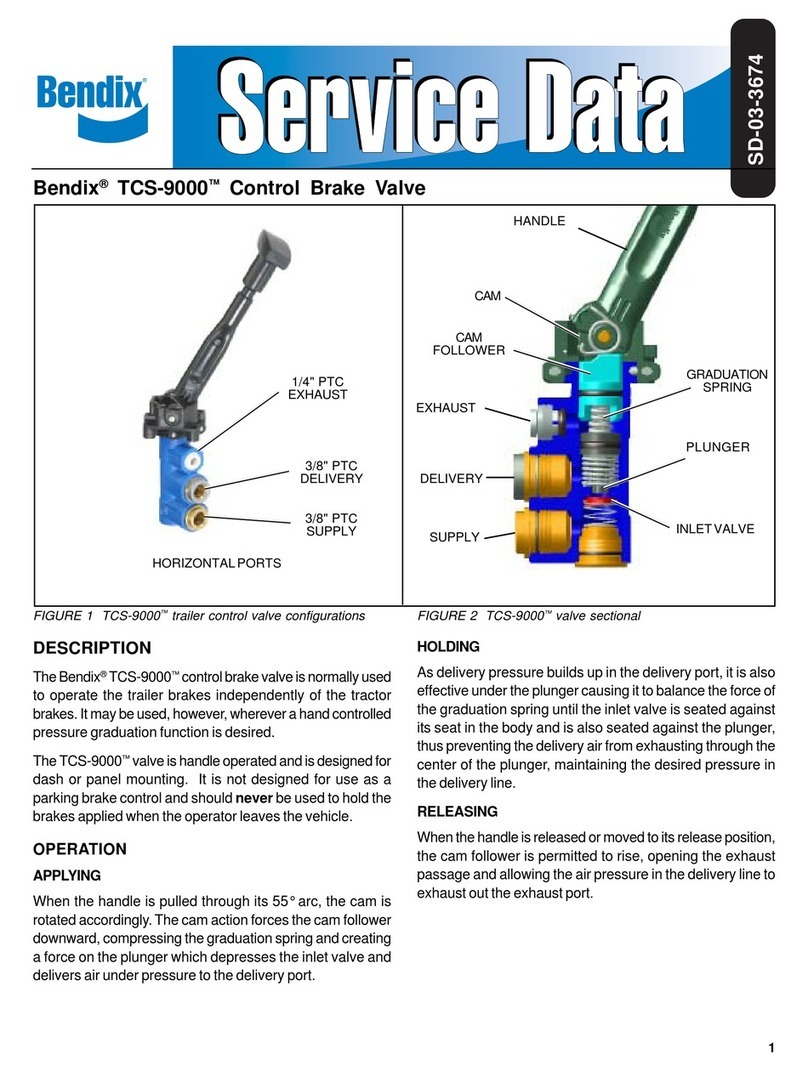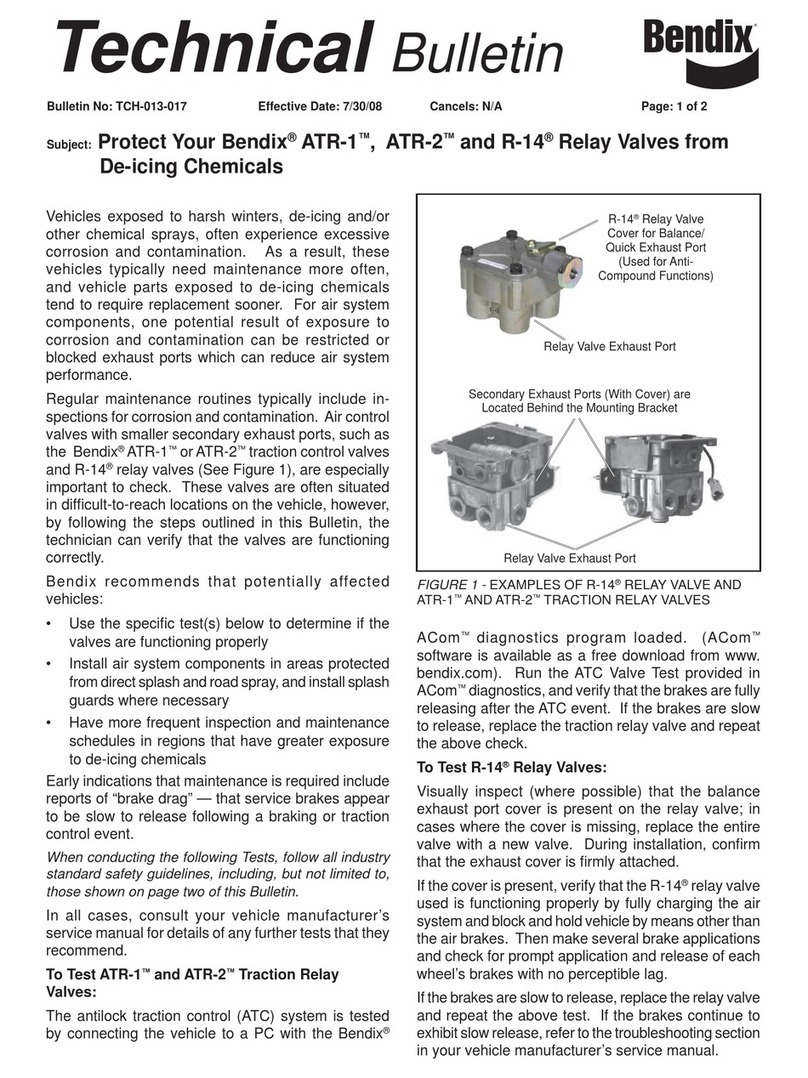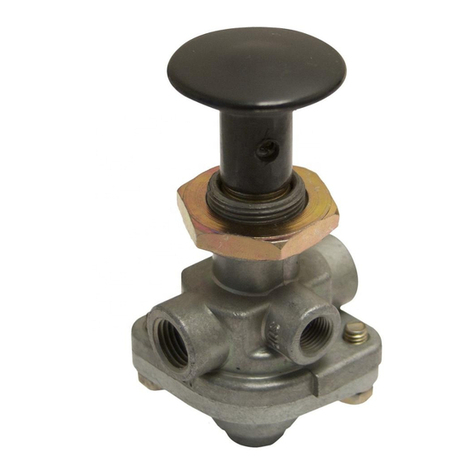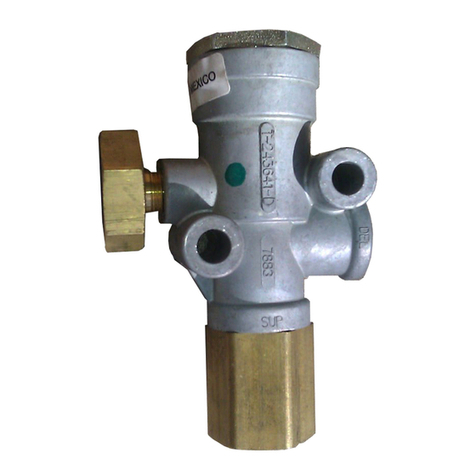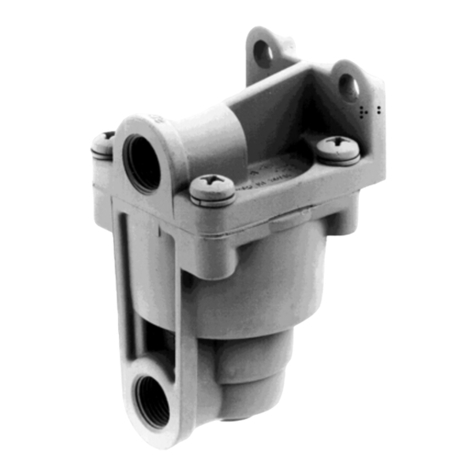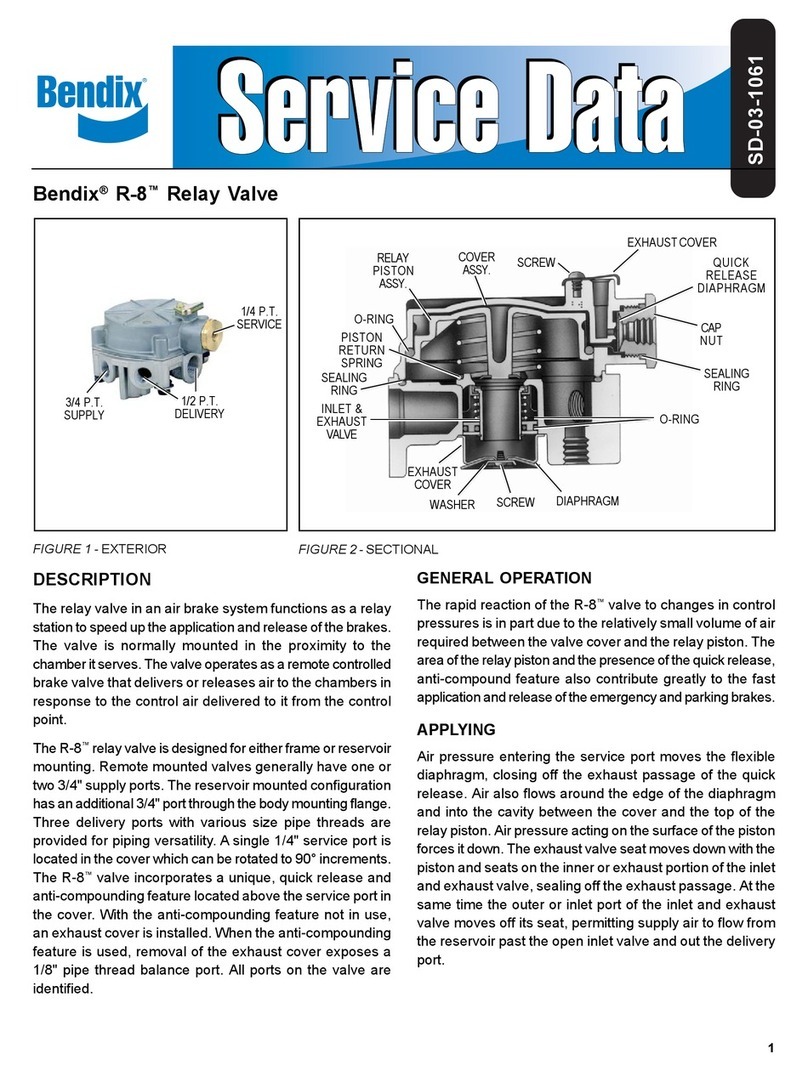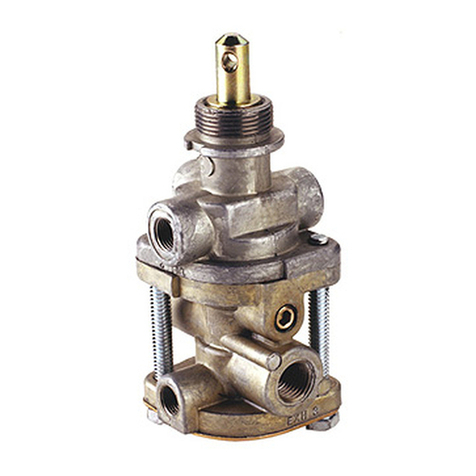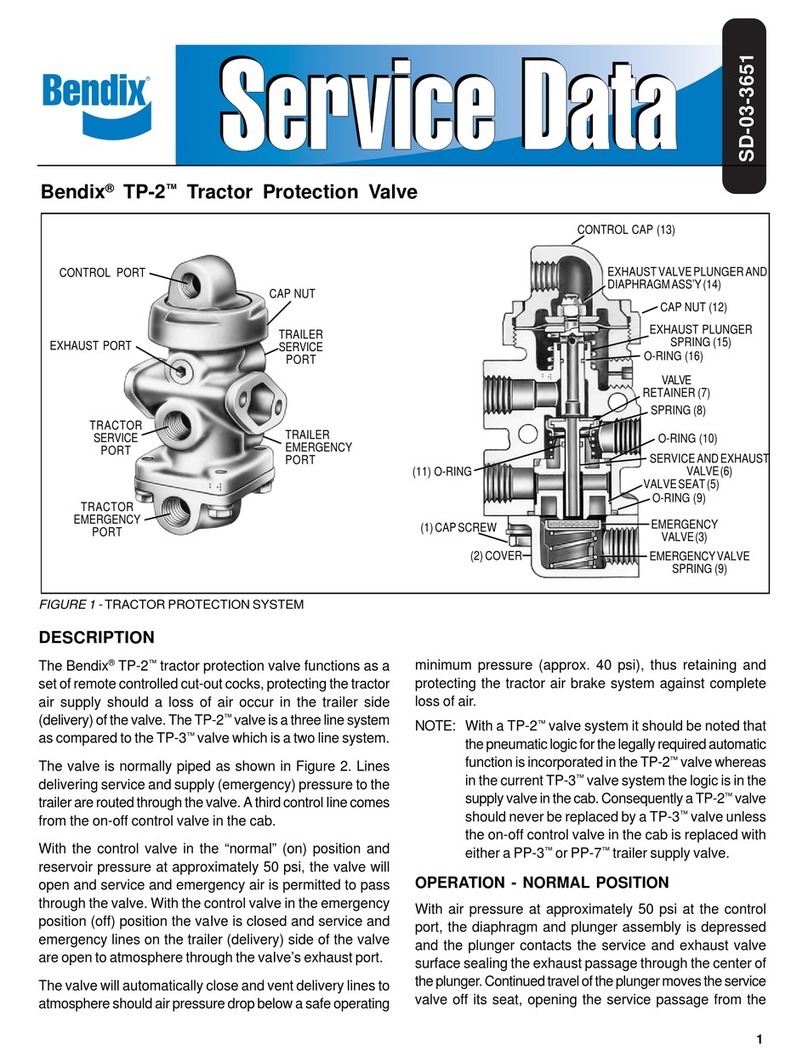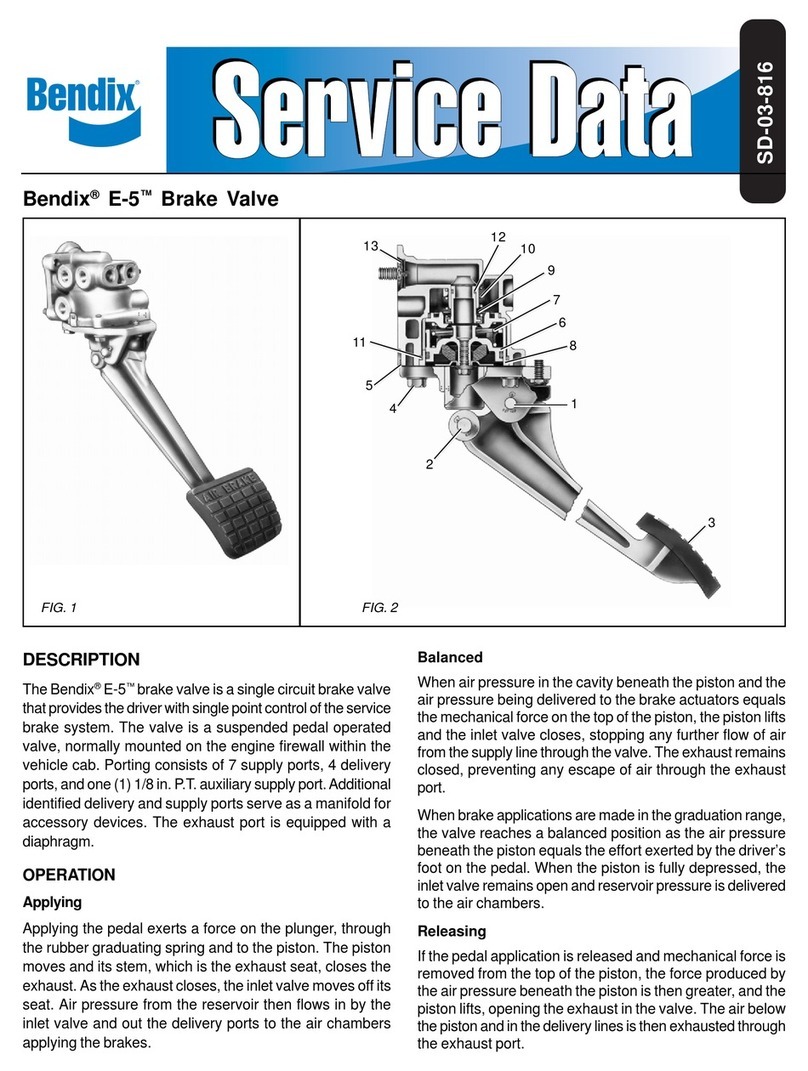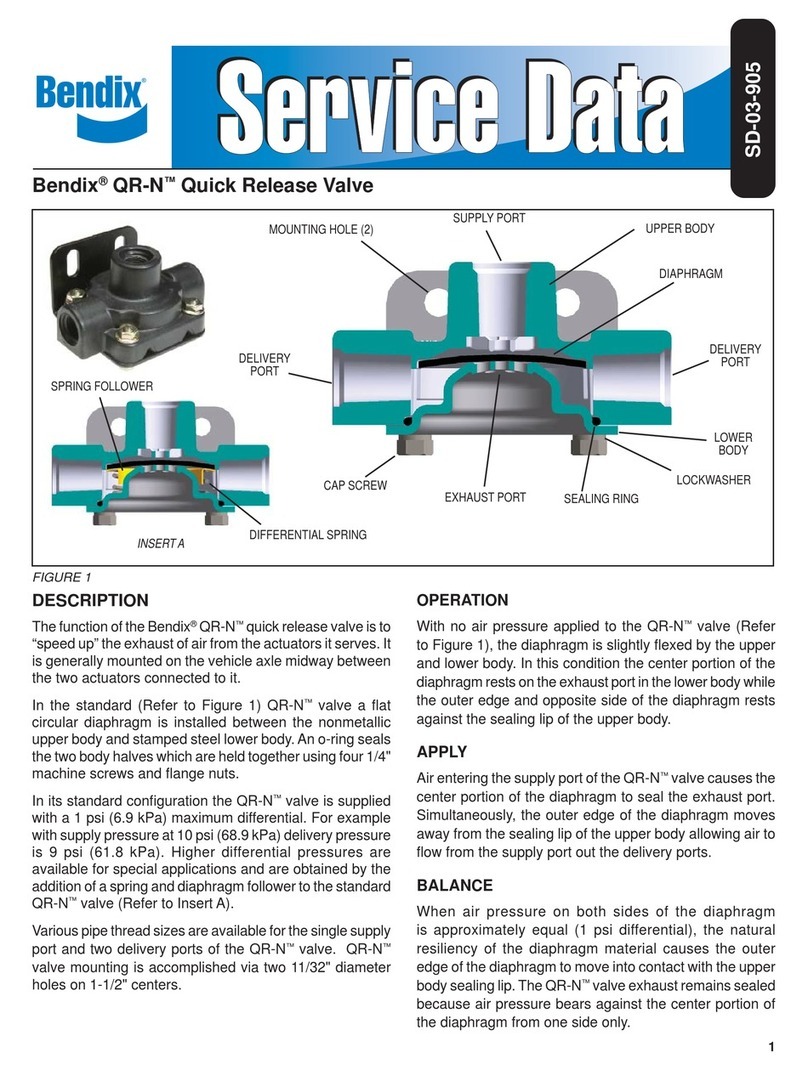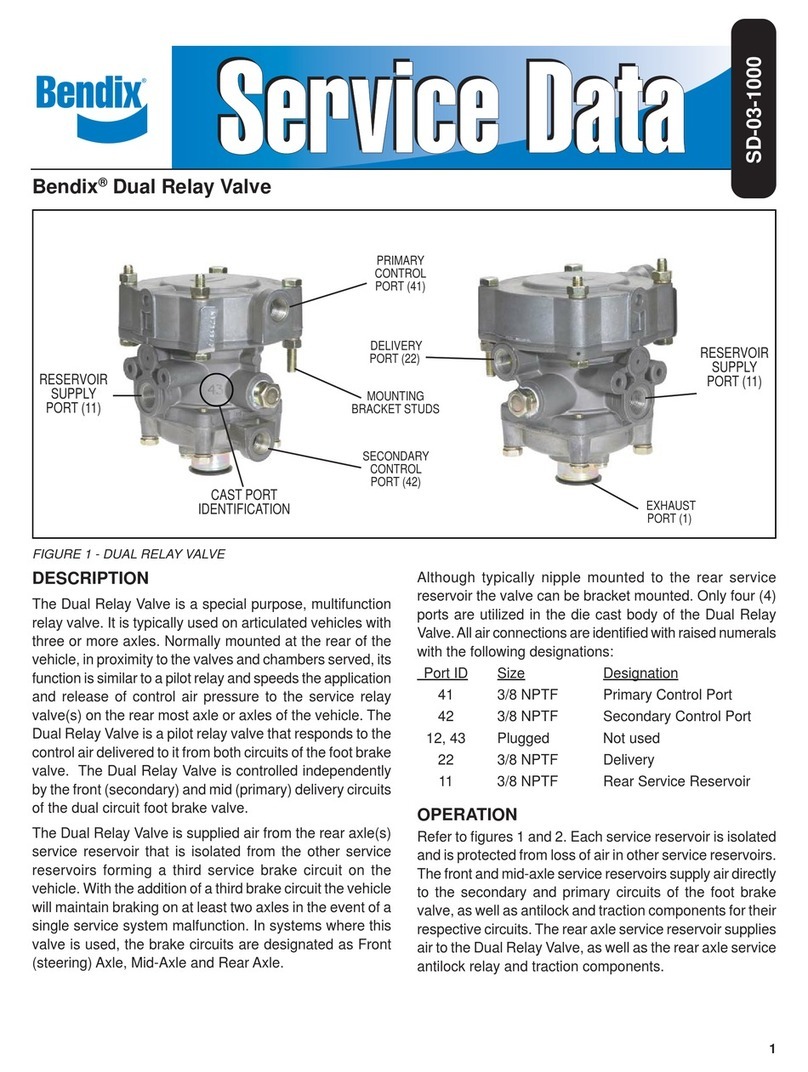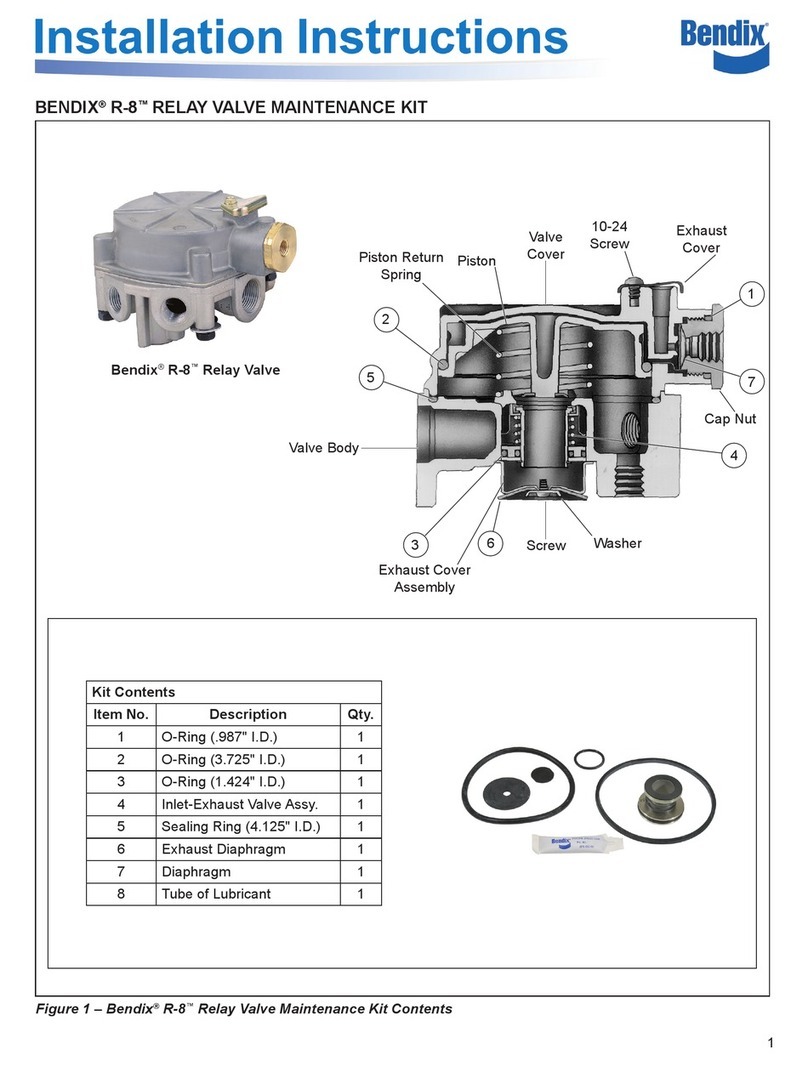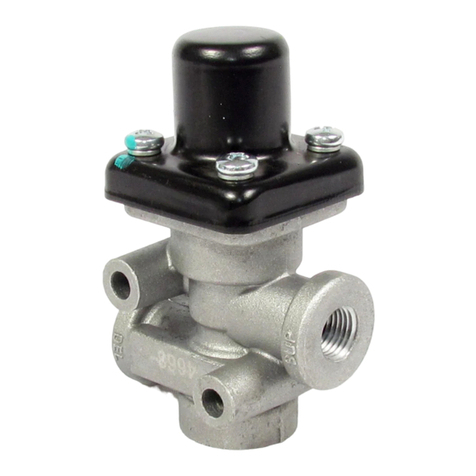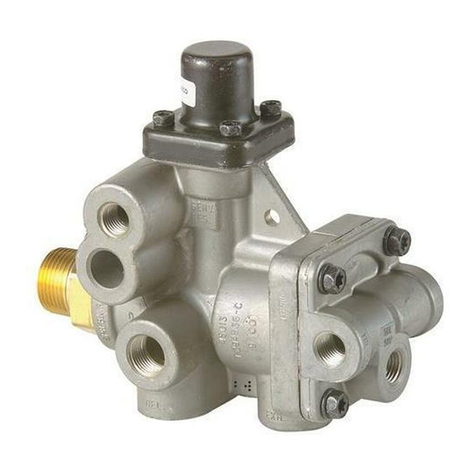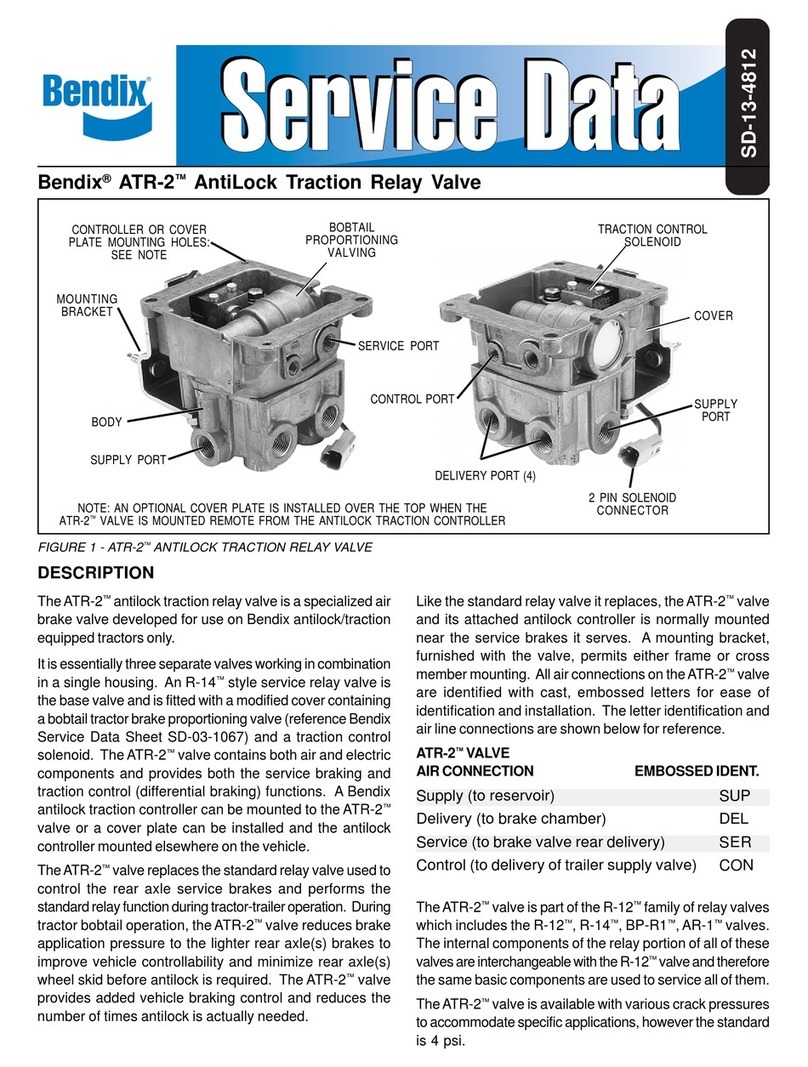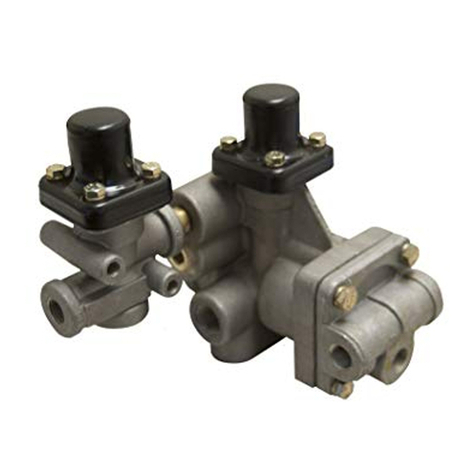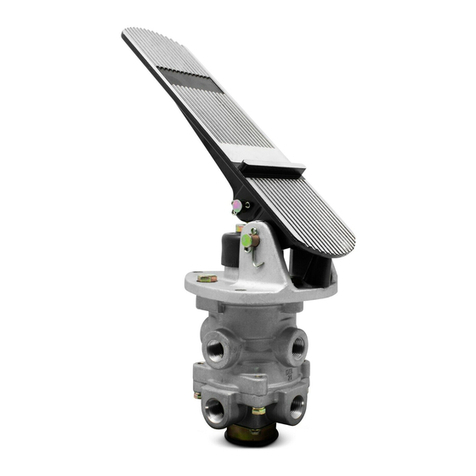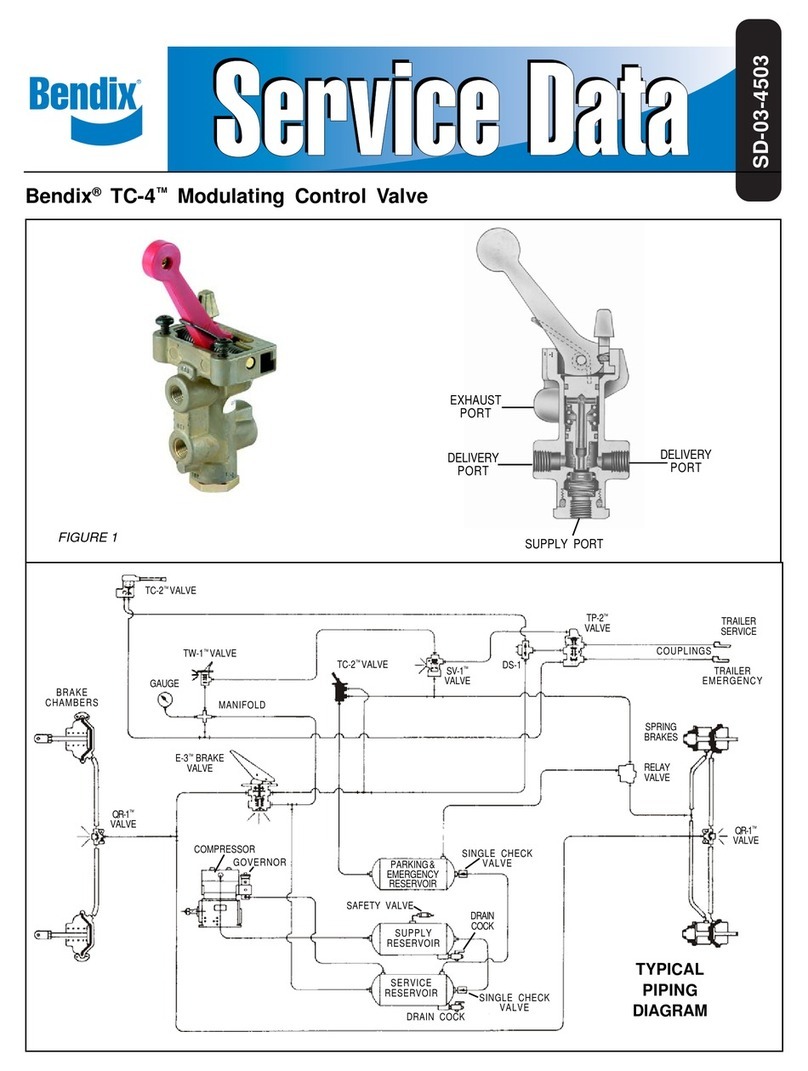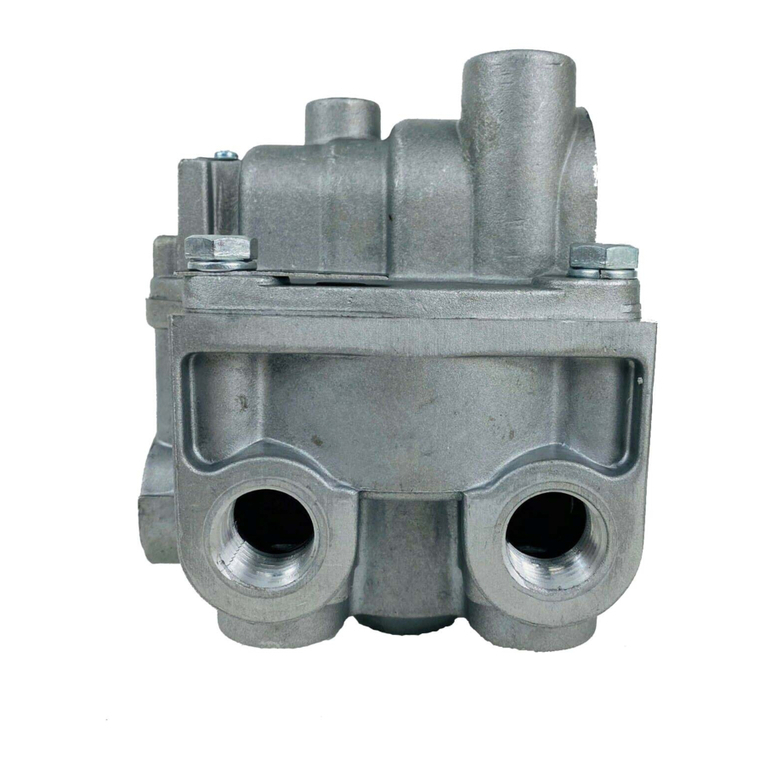
7
TheATR-1DC™valvealsohas anauxiliarycontrol portthat
permits coordination of the traction function with an air
suspendedtagaxle ona6x2 vehicle. Theauxiliarycontrol
port(21) connects to the air suspension control valve. If a
traction event occurs and the tag axle is down and loaded
theATR-1DC™valve isabletoreduceair pressurein thetag
axle air bags. Lowering pressure in the tag axle air bags
increasesthe loadingonthedriveaxle andfurther assistsin
eliminatingwheelspin onacceleration.
OPERATION
Reservoir air pressure is constantly present at the traction
solenoid. When the electronic controller detects wheel
spinitenergizes thesolenoid and inresponse thesolenoid
opens momentarily. While the solenoid is open, air is
deliveredthroughinternal passagesto double checkvalve
diaphragm“A”.
Note: If the optional auxiliary port is in use, traction
solenoid air pressure is also delivered to the air
suspension system of the “tag” or non-drive axle.
This signal pressure is used to exhaust some of
the air pressure from the suspension bags on the
tag axle. This causes some of the vehicle weight
(carried by the tag axle) to shift to the drive axle
furtherenhancing thetractioncontrol.
The check valve diaphragm flexes in response and seals
thepassage tothe open exhaustof the secondarydelivery
of the brake valve. Once past double check valve “A”, air
from the solenoid flows to double check valve “B” which
flexes and seals the passage to the open exhaust of the
primary delivery of the brake valve. Air flowing around
doublecheckvalve “B”moves through therest ofthevalve
in the same manner as a normal service brake application
andisdeliveredoutthedeliveryportsoftheATR-1DC™valve
totheantilock modulatorsnear the rearwheels theyserve.
Whenthe electroniccontroller de-energizestheATR-1DC™
valve's traction solenoid, air between the solenoid and the
double check valve “A”, including the air signal sent to the
suspension system through the optional auxiliary port,
returns to the solenoid and is exhausted. Air between
double check valve “A” and “B” is exhausted from the
secondary circuit of the brake valve. Air between the relay
piston and double check valve “B” is exhausted from the
primary circuit of the brake valve. Air in the service brakes
isexhaustedat themainATR-1DC™valve's exhaustport.
PREVENTIVE MAINTENANCE
GENERAL
Perform the tests and inspections presented at the
prescribedintervals. If theATR-1DC™valvefailsto function
asdescribed, orleakageisexcessive,it shouldbe repaired
or replaced with a new or genuine Bendix remanufactured
unit,availableat anyauthorizedparts outlet.
EVERY 3 MONTHS, 25,000 MILES OR 900 OPERATING
HOURS
1. Remove any accumulated contaminates and visually
inspect the exterior for excessive corrosion and
physical damage.
2. Inspectall airlinesconnectedtotheATR-1DC™valvefor
signs of wear or physical damage. Replace as
necessary.
3. Testairlinefittings forexcessive leakageandtighten or
replace as necessary.
4. Performthe LeakageTestdescribedin thismanual.
EVERYYEAR, 100,000MILES, OR 3,600OPERATING
HOURS
1. PerformtheOperation andLeakage Tests describedin
this manual.
WARNING! PLEASE READ AND FOLLOW
THESE INSTRUCTIONS TO AVOID
PERSONAL INJURYOR DEATH:
When working on or around a vehicle, the following
general precautions should be observed at all times.
1. Park the vehicle on a level surface, apply the
parking brakes, and always block the wheels.
Always wear safety glasses.
2. Stop the engine and remove ignition key when
working under or around the vehicle. When
working in the engine compartment, the engine
should be shut off and the ignition key should be
removed. Where circumstances require that the
enginebe inoperation, EXTREME CAUTIONshould
be used to prevent personal injury resulting from
contact with moving, rotating, leaking, heated or
electrically charged components.
3. Do not attempt to install, remove, disassemble or
assemble a component until you have read and
thoroughly understand the recommended
procedures. Useonly theproper toolsand observe
all precautions pertaining to use of those tools.
4. If the work is being performed on the vehicle’s air
brake system, or any auxiliary pressurized air
systems,make certain todrainthe air pressurefrom
all reservoirs before beginning ANY work on the
vehicle. If the vehicle is equipped with an AD-IS™
air dryer system or a dryer reservoir module, be
sure to drain the purge reservoir.
5. Following the vehicle manufacturer’s
recommendedprocedures, deactivatetheelectrical
system in a manner that safely removes all
electrical power from the vehicle.
6. Never exceed manufacturer’s recommended
pressures.
7. Never connect or disconnect a hose or line
containing pressure; it may whip. Never remove a
component or plug unless you are certain all
system pressure has been depleted.
